Nutrition
Best Vitamins and Supplements for Eye Health
You may already be eating some of the best foods for healthy eyes, including carrots, broccoli and salmon. Diet is one of the most effective ways to protect the health of your eyes. However, sticking to a balanced diet that contains the necessary vitamins and nutrients that your eyes need can be a challenge. That’s why you may be wondering: What supplements and vitamins are good for the eyes?
To help cover whatever you’re lacking in your diet while working to improve your vision and prevent eye disease, choose vitamins and supplements that support eye health. Below are some of the best vitamins and supplements for eye health, but of course, you should always consult a doctor before making any changes in your life and find what works best for you.
Also, see what sunglasses you should be wearing, what habits can damage your vision and six common eye conditions you may face as you get older.
The best vitamins and supplements for eye health

In addition to a balanced diet, here are the best vitamins and supplements for your eyes. Fortunately, you can find most of these supplements for less than $10.
Vitamin A
Vitamin A supports your vision, immune system, heart, lungs and overall growth and development. In particular, vitamin A helps you see the full spectrum of light, as the vitamin produces color in the retina. It can also prevent your eyes from drying out. You can get vitamin A from foods like salmon, broccoli, fortified breakfast cereals, eggs and carrots.
You’ve probably heard of the magic of carrots. Yes, it’s true: Carrots are good for your eyes. Carrots (and other brightly colored fruits and vegetables) are high in beta-carotene, a compound that your body uses to make vitamin A. Beta-carotene it is also available in supplement form, although it is not as common as vitamin A and is often more expensive.
Foods that contain vitamin A
– Salmon
– Broccoli
– Fortified breakfast cereals
– Eggs
– Hiotes
Vitamin C
Vitamin C is like sunscreen: It helps protect the eyes from UV damage. The more time you spend outside and under the sun, the greater the risk of damage. According to the American Academy of Ophthalmology, too much time in the sun can cause irreversible damage. Vitamin C can also reduce the risk of macular degeneration, a disease that causes the lens of your eyes to darken.
Although a recent study found that vitamin C supplementation was effective in patients who were already vitamin C deficient, more studies are needed to better understand the relationship between vitamin C and lower risk of caught in the membrane. In addition to getting enough vitamin C, avoid tanning beds, and if you’re outdoors, wear sunglasses and a hat to protect your eyes.
Foods that contain vitamin C
– Kale
– Broccoli
– Brussels sprouts
– Oranges
– Lemons
– Strawberry
Omega-3s
Ophthalmologists often recommend their patients to eat omega-3s, and if the patient does not get enough of these fats in his diet, try to supplement. Omega-3s are found mainly in fatty fish such as tuna, salmon, mackerel or herring and other nuts and seeds.
The American Optometric Association identifies omega-3s as nutrients that can slow the progression of age-related macular degeneration. Studies have also found that it can help prevent dry eye disease. These nutrients are good for both conditions because of their anti-inflammatory effects.
Foods with omega-3s
– Tuna
– Salmon
– Mackerel
– Herring
– Chia seeds
– Flaxseed
– Walnuts
Read more: The best multivitamins
Vitamin E
Another powerful antioxidant, vitamin E is essential to all our cells and cellular functions. It helps protect our body from cancer-causing free radicals and plays an important role in vision. Studies have shown that vitamin E can help protect the retina from free radicals that can cause eye disease.
Vitamin C, another antioxidant, has many regenerative properties. Vitamin E can only help protect existing cells. But vitamin E can slow the progression of age-related macular degeneration. The American Optometric Association recommends 400 IU of vitamin E per day.
Foods that contain vitamin E
– Sunflower seeds
– Almonds
– Peanuts
– Colorful vegetables
– Red pepper
– Mangoes
– Avocados
Zinc
Zinc is found in almost all multivitamins because it is a very important nutrient for the body. It is used to strengthen the immune system and help the body heal wounds faster. Zinc also helps with eye health.
Zinc helps vitamin A make melanin (a pigment that protects the eyes) and can protect the eyes from age-related macular degeneration. The American Optometric Association recommends 40 to 80 mg per day to reduce the development.
Foods that contain zinc
– Meat
– Shellfish
– Peas
– Lens
– Pumpkin seeds
– Cashews
– Almonds
– Eggs
– Cheese
– Milk
Read more: Best Zinc Supplements
Lutein and zeaxanthin
Lutein and zeaxanthin are known to be important for our eyes. Lutein and zeaxanthin are carotenoids found in red and yellow fruits and vegetables, as these compounds give the products their bright colors. Carotenoids, also powerful antioxidants, are important for eye health. They protect the eyes from free radicals that can cause damage. Lutein and zeaxanthin, in particular, have been found to prevent damage to the retinas.
These carotenoids may also slow the progression of age-related macular degeneration. The American Optometric Association recommends a daily dose of 10 mg of lutein and 2 mg of zeaxanthin. While you can get lutein and zeaxanthin in supplement form, a single bottle is on the pricier side. You can find it better, easier and easier to eat more fruits and vegetables.
Foods containing lutein and zeaxanthin
– Kale
– Spanish
– Peas
– Broccoli
– Orange juice
– Red pepper
– honeydew melons
– Grapes
Vitamins and supplements found in food
| Vitamin / Supplement | Food |
|---|---|
| Vitamin A | salmon, broccoli, fortified breakfast cereals, eggs and carrots |
| Vitamin C | kale, broccoli, Brussels sprouts, oranges, lemons and strawberries |
| Omega-3s | tuna, salmon, mackerel, herring, chia seeds, flaxseed and walnuts |
| Vitamin E | sunflower seeds, almonds, hazelnuts, greens, red pepper, mango and avocado |
| Zinc | meat, shellfish, peas, lentils, pumpkin seeds, cashews, almonds, eggs, cheese and milk |
| Lutein and zeaxanthin | kale, spinach, peas, broccoli, orange juice, red pepper, honeydew melons and grapes |
What you can imagine

Most vitamins and supplements are generally considered safe for people to take, as they are nutrients that your body naturally needs. You should always consult your doctor before starting any equipment. Some vitamins and supplements can interact with various medications. Talk to your doctor or pharmacist before taking any new vitamins or supplements along with certain medications. Especially if you are pregnant or breastfeeding, consult your healthcare provider first. Your doctor should be able to safely guide you to the best vitamins and supplements for eye health, along with the right dosages.
Tips for eye health
In addition to the best vitamins and supplements for eye health, there are other ways you can protect your eyes and maintain your vision health:
- Wear sunglasses: Sunglasses block harmful UV light, reducing the risk of cataracts, eye cancer and sunburn.
- Screen gaps: The American Optometric Association recommends the 20-20-20 rule, which means that every 20 minutes, look away from your screen at something 20 feet away for 20 seconds.
- Physical activity: The American Academy of Ophthalmology reported a study that found a link between exercise and the prevention of eye damage, although more studies are needed.
- Avoid smoking: According to the Food and Drug Administration, smoking cigarettes can cause eye diseases that cause vision loss and blindness.
- Get regular eye exams: Even if you have perfect vision, it’s important to have regular eye exams to catch potential problems early. How often you should get an eye exam depends on your age. For example, people ages 20 to 39 should have an eye exam every 5 years, while those 65 and older should have an eye exam every other year and one to two.
- Remove your makeup: Before going to bed, always remove your makeup to prevent eye irritation and inflammation.
The best vitamins for the eyes FAQs
What is the best vitamin for the eyes?
Vitamin A, vitamin C, vitamin E, omega-3s, zinc and lutein and zeaxanthin are all important vitamins for the eyes. If you’re curious about which vitamins you need more of, talk to your doctor.
What vitamin is lacking in your eyes?
This can vary from person to person, but the best way to find out if your eyes are vitamin deficient is to talk to your doctor. Your doctor can order tests to help determine if you are deficient in a vitamin that may be beneficial for your eye health.
Does vitamin B12 improve eyesight?
According to Eye MD Monterey, vitamins B12 and B6 can improve eye health, support the optic nerve, reduce the risk of developing blind spots and reduce the risk of developing macular degeneration. and age, which causes blurred vision.
Do eye vitamins really work?
Vitamins for your eyes are very helpful when you are deficient in any vitamins important for vision. These include vitamin A, vitamin C, vitamin E, omega-3s, zinc and lutein and zeaxanthin. Studies have found that these vitamins and nutrients can help protect your eyes and even slow the progression of age-related eye diseases. Although these supplements are not a cure, they support eye health.
What supplements can I take to improve my vision?
You can take vitamin A, vitamin C, vitamin E, omega-3s, zinc and lutein and zeaxanthin. While all are available in supplement form at varying prices, you can naturally get these vitamins and nutrients through a balanced diet.
#Vitamins #Supplements #Eye #Health
Nutrition
Psilocybin’s mental health benefits may include improved sleep
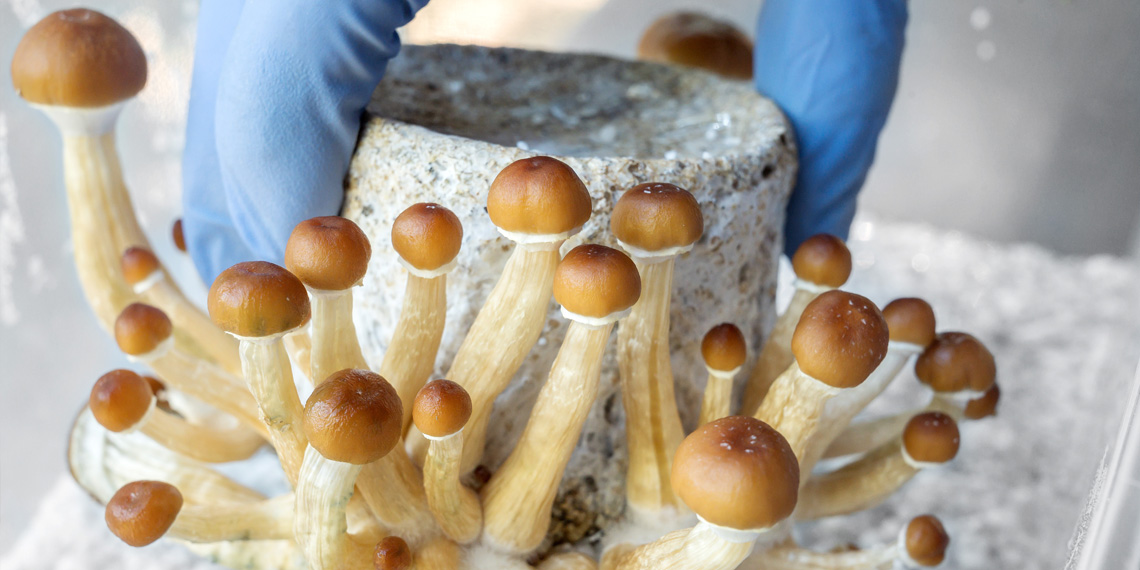
Research into psilocybin’s promise as a mental health treatment is expanding beyond mood disorders. In a new study, researchers found that participants who consumed a psychedelic substance in therapy reported a reduction in stress and an improvement in their sleep quality. The findings were published in Current Reports in Psychiatry.
Psilocybin is a natural compound found in certain types of mushrooms, often called «magic mushrooms.» When ingested, psilocybin is converted in the body to psilocin, which interacts with serotonin receptors in the brain. This interaction leads to changes in perception, perception and perception. These effects are often described as psychedelic, producing vivid visual and auditory experiences, changes in self-awareness, and deep emotional or spiritual understanding.
Scientists are particularly interested in psilocybin because of its potential to treat mental health conditions such as depression, anxiety and post-traumatic stress disorder. Unlike conventional antidepressants, which can take weeks to show effects and often require long-term use, psilocybin has been shown in early studies to produce rapid and lasting improvement in mood after a single session. or just two. This has led researchers to investigate its mechanisms of action.
The new study, led by Matthew J. Reid and Robin Carhart-Harris, aimed to better understand whether psilocybin improves the quality of sleep and whether early sleep disturbances influence the antidepressant effects of psilocybin.
«My research is focused on understanding the relationship between sleep disruption and mental health, and how sleep how does it fit into the therapeutic process.»
«In particular, I’m interested in how we can use sleep as a new therapeutic tool to replace medical treatments or improve their effectiveness. Exploring how this relationship can be expanded and intervened while psychedelic seemed natural, and I was surprised that no one had examined how psilocybin affects long-term sleep.
The researchers recruited 653 participants who planned to attend psilocybin-guided sessions, such as retreats or ceremonial experiences, making this one of the largest studies ever to investigate the use of psilocybin. of psilocybin in natural, non-clinical settings.
About 60 percent of participants encountered the possibility of major depression, with the average level of depression falling into the mild to moderate range. Sleep disturbances were nearly universal, with all participants reporting some sleep-related issues. Insomnia, especially difficulty falling asleep, was the most common sleep complaint, followed by hypersomnia and early awakening. Notably, for 26% of participants, sleep problems were their most severe depressive symptom.
«We were very surprised to find that sleep symptoms appeared to moderate the level of depressive symptoms among this group,» Reid told PsyPost. «Sleep disturbance is a frequent symptom of depression, but here, sleep disturbance was the strongest symptom of depression—even stronger than symptoms such as ‘ feeling down or sad,’ which we normally associate with depression.»
Consistent with previous studies, researchers found that psilocybin reduced depressive symptoms in participants. By two weeks after the session, depression symptoms had decreased by an average of 33%, and by four weeks, they had decreased by more than 50%. These improvements were more pronounced in participants who started with severe depression.
Sleep disturbances also improved after the use of psilocybin, although the changes were less pronounced than those observed for depression. Participants reported a modest but statistically significant reduction in problems such as insomnia and early awakening. These improvements were visible in two weeks and remained stable for four weeks.
«There seems to be a small but reliable improvement in sleep after the administration of psilocybin in the treatment area,» Reid explained. It is still unclear whether this is due to the drug itself or something indirect, and we cannot tell that from the data.
An important finding was the relationship between basic sleep disturbances and depression outcomes. Participants who had severe sleep problems at baseline were less likely to find relief from depression, even if their depression symptoms improved.
For example, people with insomnia or hypersomnia were less likely to recover completely. This suggests that sleep disturbances may interfere with the therapeutic effects of psilocybin, which may be an obstacle to obtaining optimal results.
«Those with poor sleep seem to benefit less from psilocybin administration, which may have important implications for future clinical applications,» Reid told PsyPost. «But it’s not clear why this happens, and we need to study this in more detail.»
Studies highlight the importance of sleep meditation as a factor in psilocybin-assisted psychotherapy. However, as with all research, there are limitations to consider.
The lack of a control group makes it difficult to isolate the effects of psilocybin from other factors, such as the supportive recovery environment or participants’ expectations. Similarly, natural settings have introduced differences in dosing, retreat protocols, and participant populations. Although this method improves the validity of the ecological study, it also complicates efforts to reach accurate conclusions about the effects of psilocybin.
Reid said: «It is important to remember that these results were obtained ‘in the field’ from people who voluntarily administered psilocybin. «This was not a controlled trial conducted in a laboratory setting, like a clinical trial, so we need to account for the potential bias, uncertainty, and low noise ratio inherent in this type of naturalistic research.»
The long-term goals of this research method are to «continue to explore what role sleep, if any, may play in the mechanisms of psychedelic therapy,» Reid explained. «We have several studies underway in that area and hope to share more findings soon.»
The study, «Preliminary Evidence of Sleep Improvement Following Psilocybin Administration, and Its Implications for the Treatment of Depression,» was written by Matthew J. Reid, Hannes Kettner, Tessa F. Blanken, Brandon Weiss, and Robin Carhart-Harris.
#Psilocybins #mental #health #benefits #include #improved #sleep
Nutrition
Studies show that text messages may not be as effective as reminders to fill medications
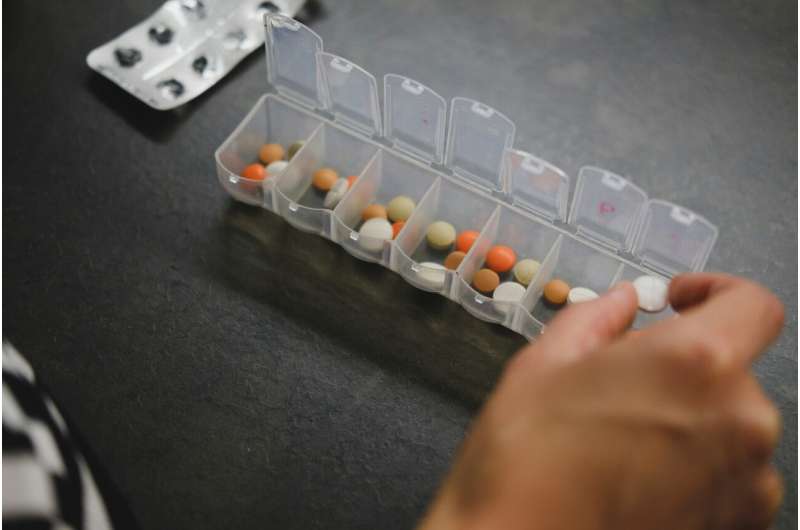

Credit: Unsplash/CC0 Public Domain
A study published in JAMA reveals text message reminders for patients who are late to refill their medications did not help improve their refills over a year.
The study enrolled more than 9,000 patients in a pragmatic clinical trial and included representation from a diverse population across subgroups, including women, Hispanics, and Spanish-speaking patients, all groups that would normally be represented by a limited method in clinical trials.
«There are many studies that focus on using technology to improve health care behaviors. However, it is unclear and poorly studied whether text message reminders are effective for a sustained period of time. , as they have become a common practice in health care settings,» said first author Michael Ho, MD, associate professor of medicine and cardiology at the University of Colorado School of Medicine at the University of Colorado Anschutz Medical Campus. .
«That’s one of the reasons we wanted to focus on text message reminders for medication refills in this study, which we hoped would also reduce serious health problems.»
Researchers compared different types of messaging strategies to standard care to improve medication adherence for chronic heart disease. Messages were provided when patients had a refill gap of more than seven days and were sent in English or Spanish based on patient preference.
«An important aspect of our research was to include representation from different cultures, since different cultures and experiences can shape the choice of communication methods and result in different technological methods,» said senior author Sheana Bull, Ph.D., MPH, professor. Emerita and consultant of the mHealth Impact laboratory at the Colorado School of Public Health at the CU Anschutz Medical Campus.
The research found adherence to fillings in the first three months improved by five percent and the median length of first voids decreased by about five days, meaning patients had more days five of their medicine supplies.
However, text message reminders were not effective in improving adherence to refills at 12 months, regardless of the type of message: standard messages, messages using persuasive communication techniques called behavioral techniques or behavioral patterns, as well as a chatbot. This was consistent across all genders and races, and there was no difference between different text messaging styles.
«Chronic health conditions are on the rise and managing these conditions often requires patients to take medications for a long time. It is important to know ways to help patients take their medications regularly to prevent these medical conditions. so that he doesn’t get worse,» adds Ho.
«Our study shows adherence to chronic heart medication was lower than 12 months, so we need to explore new ways to improve this, especially when more people are improve chronic health conditions.»
Researchers will next study if advanced digital technologies including machine learning and artificial intelligence can improve long-term behavior related to medication refills.
The research was conducted by a team at the CU Anschutz Medical Campus, including faculty from the CU School of Medicine, the Skaggs School of Pharmacy and Pharmaceutical Sciences and the Colorado School of Public Health.
Additional information:
P. Michael Ho et al, Patient Personal Data and Behavioral Models to Improve Adherence to Chronic Cardiovascular Medications, JAMA (2024). DOI: 10.1001/jama.2024.21739
Provided by CU Anschutz Medical Campus
Excerpt: Study shows text messages may not be effective as refill reminders (2024, December 3) Retrieved December 3, 2024 from https://medicalxpress.com/news/2024- 12-text-messages-ineffective-medication-refill.html
This document is subject to copyright. Except for any legitimate activity for the purpose of private study or research, no part may be reproduced without written permission. Content is provided for informational purposes only.
#Studies #show #text #messages #effective #reminders #fill #medications
Nutrition
Analyzing user behavior and content across channels can help protect data
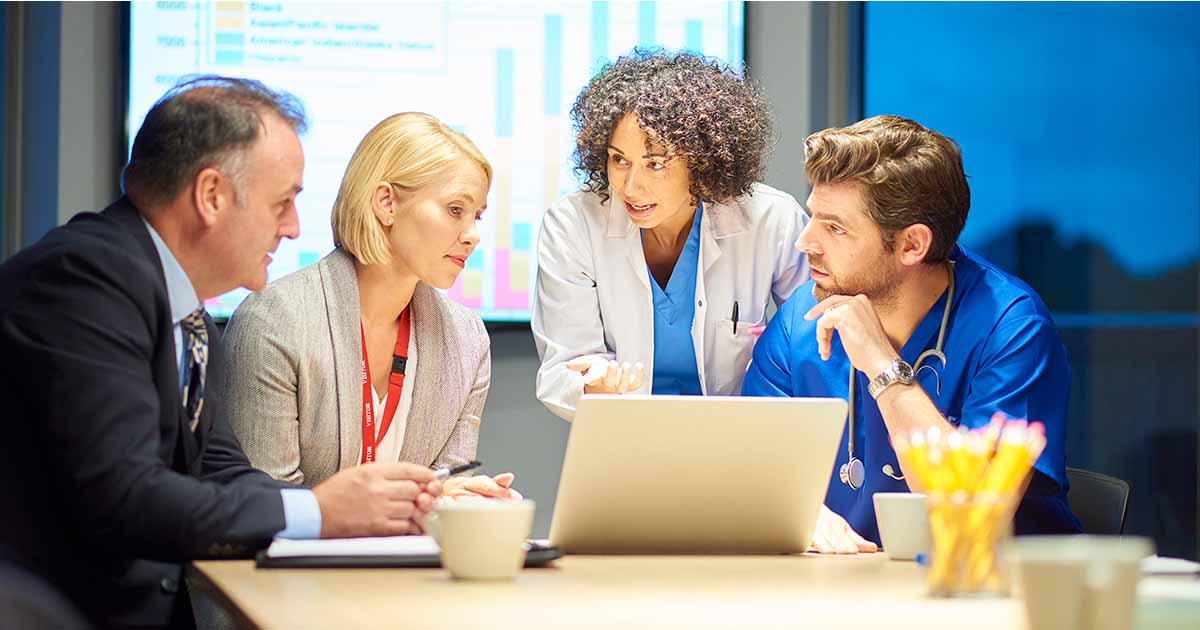
By 2024, healthcare organizations experienced the most expensive cyber attacks, costing nearly $10 million.1 And with the proliferation of ransomware and piracy tools, healthcare will continue to be targeted by such attacks.
«[Threat actors] they try to extort payments from organizations. That’s a trend we’re seeing,» said Ryan Witt, Proofpoint’s vice president of industry solutions and chairman of the company’s healthcare consumer advisory board.
Chief information security officials are also concerned about data loss caused by insiders, compromised accounts and careless users with unsecured email. , remote work applications, cloud computing and productivity platforms.2
Advanced security measures are needed to protect patient information from AI-enhanced ransomware, phishing and insider threats and to ensure the integrity of healthcare systems. Understanding the current health threat landscape is the first step to adopting a human-centered, data security approach.
Protecting data starts with people
Today, attackers attack people, not technology. That’s where cybersecurity leaders should focus their attention and resources.
«The economy of cybercrime is based on how victims interact,» said Brian Reed, senior director of cybersecurity strategy at Proofpoint. «It’s a lot less hassle to go in and socially engineer a victim or design a hacking trap than it is to spend time and energy building, testing and releasing holiday spoilers.»
Reed estimates that in healthcare, like many other industries, about 80% of attacks focus on human factors rather than technical weaknesses. «Most of those data loss cases are good people making bad decisions,» he said. According to Reed, the most common such threats are:
- Ransomware attacks, which often include prompting to install a browser extension, click a link or download an application;
- Compromising commercial email, including covert attempts to get users to take action outside of their normal course of action; and
- Loss of data due to malicious, compromised or negligent individuals.
To prevent accidental and inadvertent data loss
Typically, cyber security refers to the ability to catch vulnerabilities, stop phishing attempts and identify social engineering attempts before they reach end users. However, the significant increase in endpoints and the proliferation of cloud computing across the healthcare environment and an ever-changing workforce that may include part-time workers and mobile nurses have increased the need for cloud solutions. data loss protection (DLP).
Evidence of 2024 Data Loss Zone the report said that 70% of respondents say that careless users are the main cause of data loss and breach of control.3 Image of Verizon 2024 Data Breach Investigation Report found that 68% of crimes involve «a harmless human element, such as someone falling for a social engineering attack or making a mistake.»4 To illustrate this point, a 2023 report from Tessian (now a Proofpoint company) found that about a third of employees send about two emails to the wrong recipient a year and a year.5
DLP solutions recognize that preventing data loss from the inside is just as important as stopping external access. Many methods use an advanced matching method to try to identify important data that may be accidentally or intentionally generated before it leaves the network. Advanced DLP goes a long way; large language models can look through billions of records and sort out important information by understanding the context and relationships between files and directories.
Joshua Linkenhoker, a Proofpoint business security consultant, said these models can scan e-mails or files being transmitted to identify links that may contain sensitive information. Even more powerfully, AI can be trained on human behavior to stop hard to catch mistakes like accepting the wrong email submission for an email recipient. Linkenhoker calls it «behavior-driven action.»
Get data output from email, cloud and endpoints
Real-time AI applications add a powerful role to automation. Every time an employee is guided to make the right choice about handling sensitive data, a potential breach of law is avoided.
Behavioral AI can also train users to think twice before transferring data to an unsecured cloud storage folder or sharing a sensitive file via OneDrive or SharePoint. Witt believes that cloud-based productivity systems designed specifically to share information have become a major threat to healthcare.
Reed acknowledged that it’s one thing to anticipate targeted cybercriminal movements, but it’s much harder to anticipate the performance, if not security, of overburdened healthcare workers.
Of course, he added, AI behavior can also stop strange behavior with bad intentions. When an unsuspecting user starts renaming important financial files «family pictures.zip,» moving them to a USB drive and deleting them from a local drive, it’s clear that this type of overreach is not guilty. And without the ability to use scalable AI to detect suspicious behavior, it’s difficult to identify inside actors.
With the increasing number of endpoints and monitoring stations, specialized information security solutions have increased. While a «security in depth» approach is important, the volume of data sources can make it more difficult for healthcare security analysts to analyze events in real time and understand actions. of people according to the context.
Evidence-based research has shown that nearly 70% of IT professionals surveyed rank visibility into sensitive data, user behavior, and external threats as the most important capabilities of malware prevention programs. data loss.6 It’s a complex problem because information security analysts need to see both depth and breadth at the same time, also known as visibility at scale.
When information flows from different sources are combined, health care organizations can go from protecting against known, commercial attacks to preventing the most advanced, designed and unanticipated operations. That provides the opportunity to use AI across information silos to achieve a real-time, 360-degree view of the threat environment.
«Now you have to go find the needle in the haystack,» Witt said. «You need that level of full visibility, that level of analytics, that level of AI that sees a small number of interactions…. You’re capturing a very small fraction of the total traffic, but it’s so small. it’s really important.»
Download the Proofpoint-HIMSS white paper on adopting a human-centered approach to healthcare data security Here.
References
1. IBM and Ponemon Institute. 2024. Cost of Information Crisis Report 2024. https://www.ibm.com/reports/data-breach.
2. Proofpoint and CyberEdge. 2024. 2024 site of data loss. https://www.proofpoint.com/us/resources/threat-reports/data-loss-landscape.
3. Ibid.
4. Verizon. 2024. Verizon Data Breach Investigation Report 2024. https://www.verizon.com/business/resources/reports/dbir/.
5. Evidence. 2024. To change DLP [eBook]. https://www.proofpoint.com/sites/default/files/e-books/pfpt-us-eb-rethinking-dlp.pdf.
6. Proofpoint and CyberEdge, 2024 site of data loss.
#Analyzing #user #behavior #content #channels #protect #data
-

 Mental health1 año ago
Mental health1 año agoThe survey found that 56% say ‘alone time’ is important for mental health
-

 Health care1 año ago
Health care1 año agoIf you need a break to shut down during the holidays, you’re not alone, new research finds | CNN
-
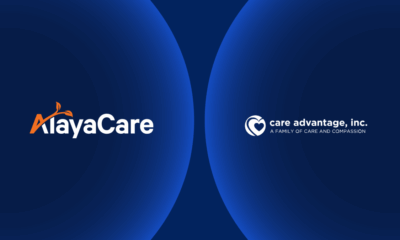
 Medication1 año ago
Medication1 año agoAlayaCare’s Cloud-Based EHR Platform Onboards Home Care Benefits of the Home Care Center
-

 Mental health1 año ago
Mental health1 año agoMiss Gabriella said her husband Thomas made a «sudden» decision to ‘kill himself at his beloved parents’ home’ after suffering a negative reaction to the medication he was prescribed.
-

 Medication1 año ago
Medication1 año agoPCOR awards $156 million in new patient-centered health research
-

 Medication1 año ago
Medication1 año ago5WPR Expands Health and Wellness Divide with New Focus on Functional Nutrition
-

 Medication1 año ago
Medication1 año agoLady Gabriella’s husband ‘killed himself after taking antidepressants’
-
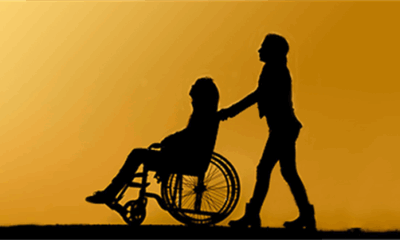
 Health care1 año ago
Health care1 año agoBill would push the VA to expand outside medical care options for vets






